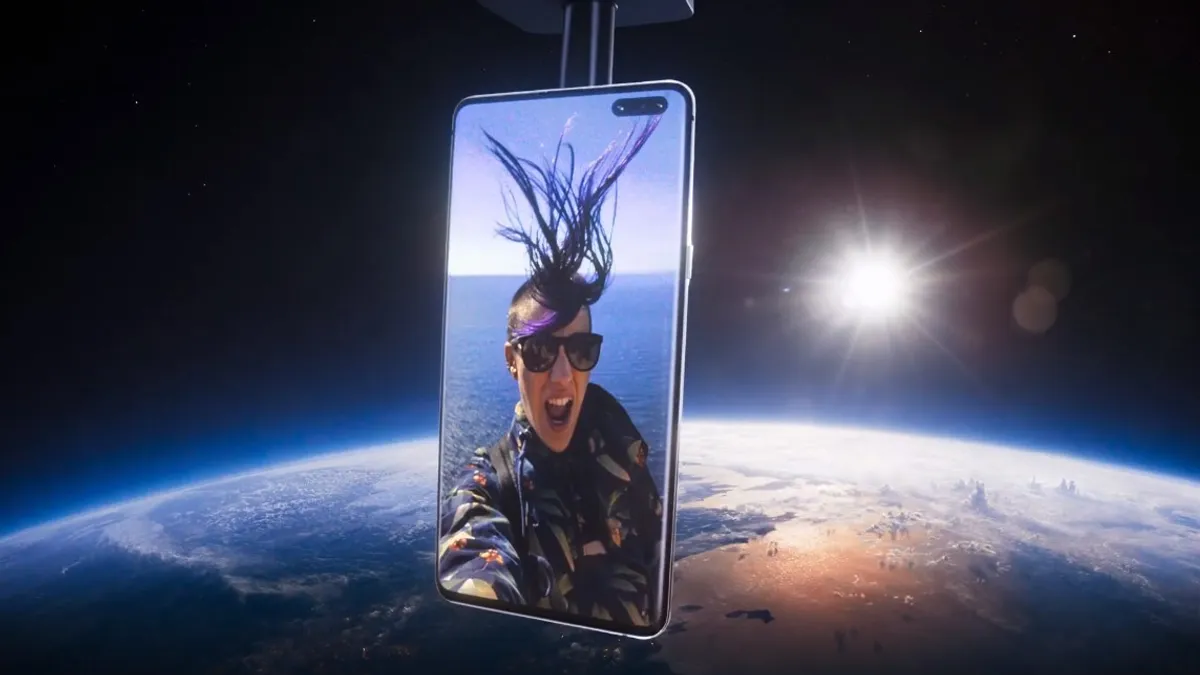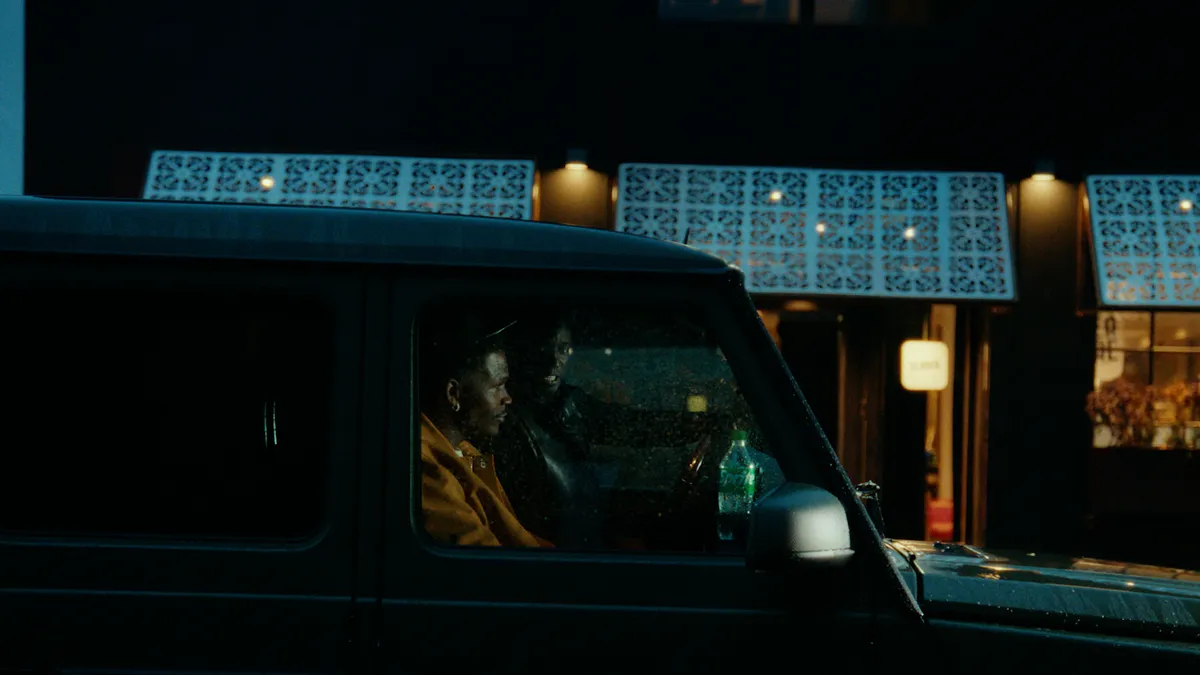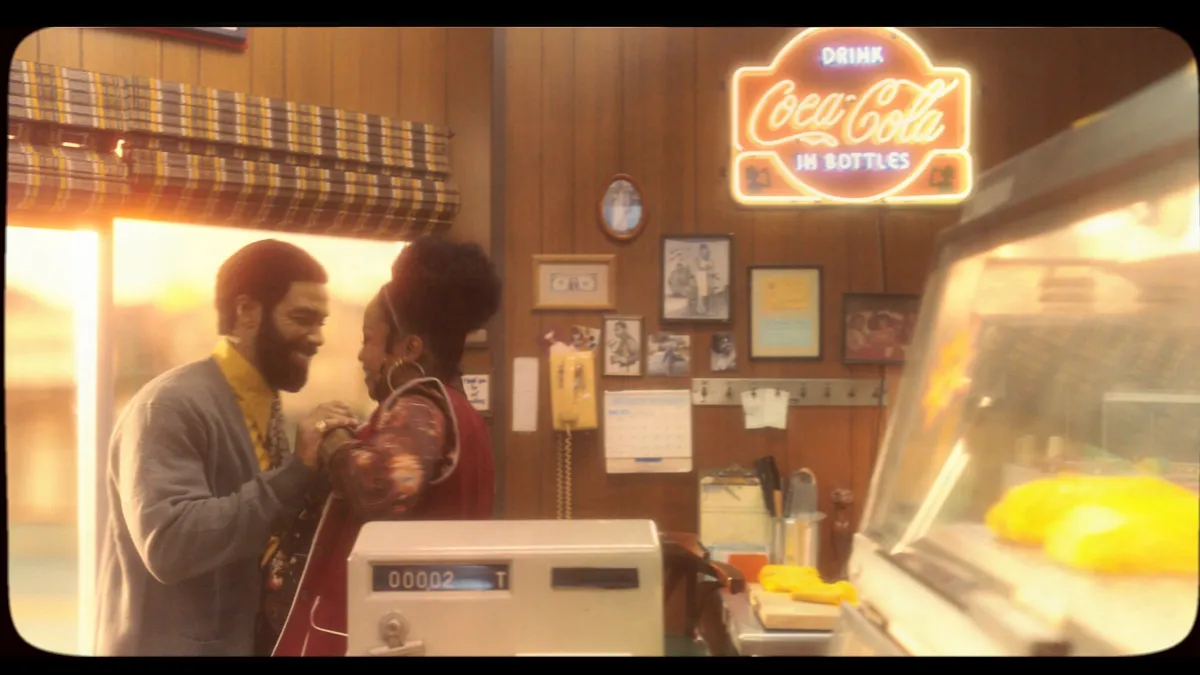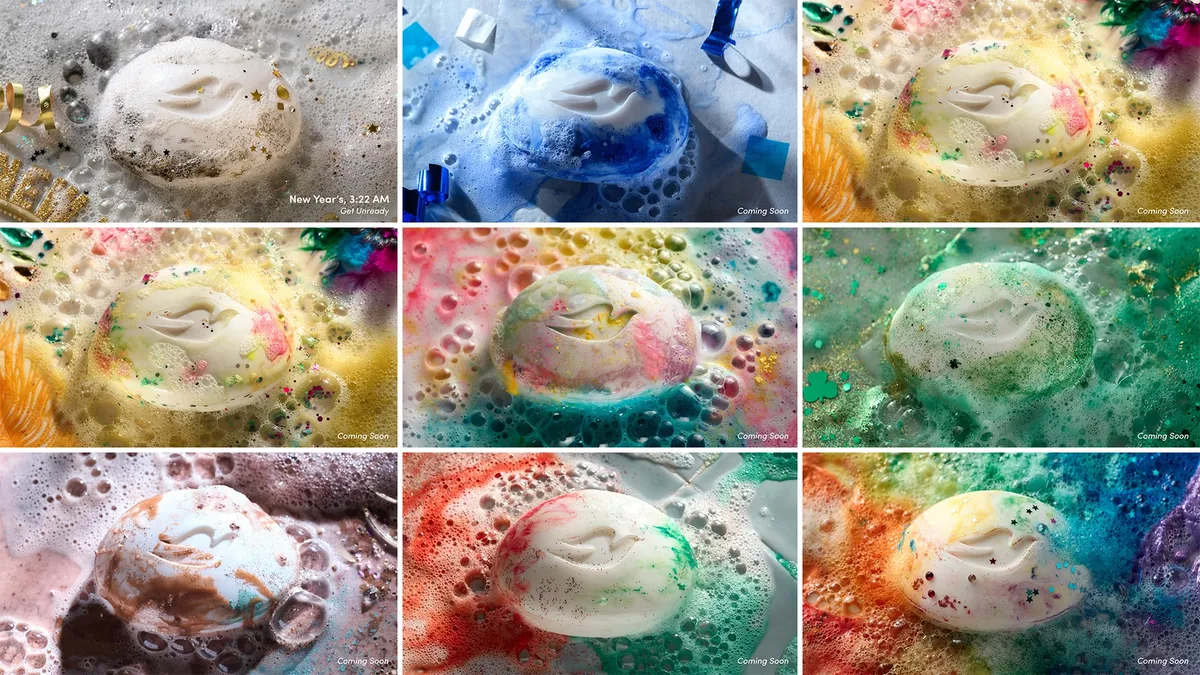Campaign Trail is our analysis of some of the best and worst new creative efforts from the marketing world. View past columns in the archives here.
UPDATE: Oct. 29, 2019: A Samsung spokesperson told Marketing Dive that weather conditions forced the device to make a planned, soft landing on Saturday after capturing tens of thousands of photos.
UPDATE: Oct. 28, 2019: A Michigan resident said Samsung's Space Selfie device crashed onto her property on Saturday, Oct. 26. The Gratiot County Herald reported that part of the tech giant's device tangled with nearby power lines and that company representatives collected the equipment. It's unclear how many selfies the device was able to capture during the campaign, which was cut short, or whether the effort will be rebooted. Samsung representatives could not be reached for comment.
Samsung Electronics became well-known for selfies after Ellen DeGeneres' star-studded photo from the 2014 Academy Awards snagged a record-breaking number of shares. More than five years later, the technology giant is taking its selfie game to new heights by launching its latest smartphone model to the edge of Earth's atmosphere and uploading fan-submitted photos to make them appear as if they're in space.
The marketing stunt, which kicked off this week, aims to position the Galaxy S10 5G as a phone so durable it can withstand hostile conditions without special casings or insulation, while demonstrating Samsung's "pioneering spirit" and setting new standards for marketing mobile technology.
"We have brought the world a series of technological firsts in our products, and in #SpaceSelfie we're bringing that pioneering spirit across in our marketing," said Samsung Europe CMO Benjamin Braun in a press release about the effort. "We wanted to bring consumers on our journey beyond the norm — to make them a part of our innovation story in a really fun and lighthearted way."
The #SpaceSelfie effort adds a creative layer to marketing initiatives powered by user-generated content and capitalizes on the popularity of selfie-taking. It is the first campaign under Braun. The effort is especially timely given that it coincides with the 50th anniversary of the first moon landing and the 10th birthday of the Galaxy smartphone line of products.
A lofty stunt
Working with agency BBH, Samsung launched a high-altitude balloon from South Dakota. The solar-powered machine spans half the size of a basketball court and climbed nearly 65,000 feet into the stratosphere, where for 10 days it will receive selfies transmitted from Earth and layer them over real-time shots of the planet. People down on Earth can register on a campaign microsite and upload their photo from Oct. 23-31. A combination of human and automated moderation is set up to prevent people from submitting inappropriate images, increasing the likelihood of a brand-safe initiative.
The team created two custom apps to power the lofty stunt: one ground control app to transmit selfies between the microsite and the rig floating in space, and another designed for the rig to communicate with the phone and send images back to Earth. Each photo takes about three seconds to capture. From there, the selfie is returned to the submitter, who can then share on social media and extend the campaign's reach.
"Phone advertising has become quite samey, all gleaming devices at beautiful angles with trendy photos."

Will Lion
Managing partner of strategy, BBH London
Part of what sets Samsung's latest UGC-centric campaign apart from fellow tech giants is that #SpaceSelfie doesn't include advertising on more traditional media like TV or print.
"Phone advertising has become quite samey, all gleaming devices at beautiful angles with trendy photos," Will Lion, BBH London's managing partner of strategy, told Marketing Dive via email. "We wanted a break in series; something that would demonstrate how epic Samsung's phones are by helping people take the most amazing photo of their life — from space — and maybe just break the internet and power up sales ahead of Christmas."
Influencers boost social reach
English model and actress Cara Delevingne received a special space-inspired briefcase earlier this month containing the new S10 5G phone and an invitation to get her selfie featured first in space. She teased the campaign on Oct. 16 on her Instagram, which has 43.6 million followers — ahead of Samsung's official announcement — with video clips, photos and other original content featuring a faux astronaut sporting Samsung-branded space gear.
The tech brand revealed Delevingne's submitted photo at a campaign kickoff event in London on Oct. 23.
Other influencers, such as soccer star Zlatan Ibrahimović, are lined up to partner on #SpaceSelfie and call on their respective fans to browse the brand's microsite and submit photos. This campaign relies on the reach of partners Delevingne and Ibrahimović, who have combined social networks of more than 130.5 million, to drum up organic excitement for the new smartphone model.
Meanwhile, Samsung's global CMO Younghee Lee has said she's skeptical of influencer marketing when it's a transactional or inauthentic partnership, according to The Drum. Working with Delevingne and Ibrahimović appears to align with Lee's vision for influencer deals, as they don't fit the typical model of creator who is famous only for producing content on social.
Samsung's latest campaign follows recent efforts by the brand to carve out its own smartphone lane and capture a greater share of consumer attention around 5G-enabled devices. Earlier in October, the tech giant's U.S. arm unveiled a diversity-minded TV spot to celebrate the 10th anniversary of the first Galaxy phone. The 60-second ad highlights the varying lifestyles of Galaxy users, who can now also unlock an exclusive outfit in "Fornite" — a favorite game among typically elusive consumers like Gen Z.
The brand's renewed efforts around flashy marketing stunts, social media influencers and a fresh YouTube series illustrate how Samsung is adjusting its marketing creative to connect with the next generation of mobile customers.
"Our ethos is 'do what you can't' and the Samsung [#SpaceSelfie] is just that," Braun said in the press release.























